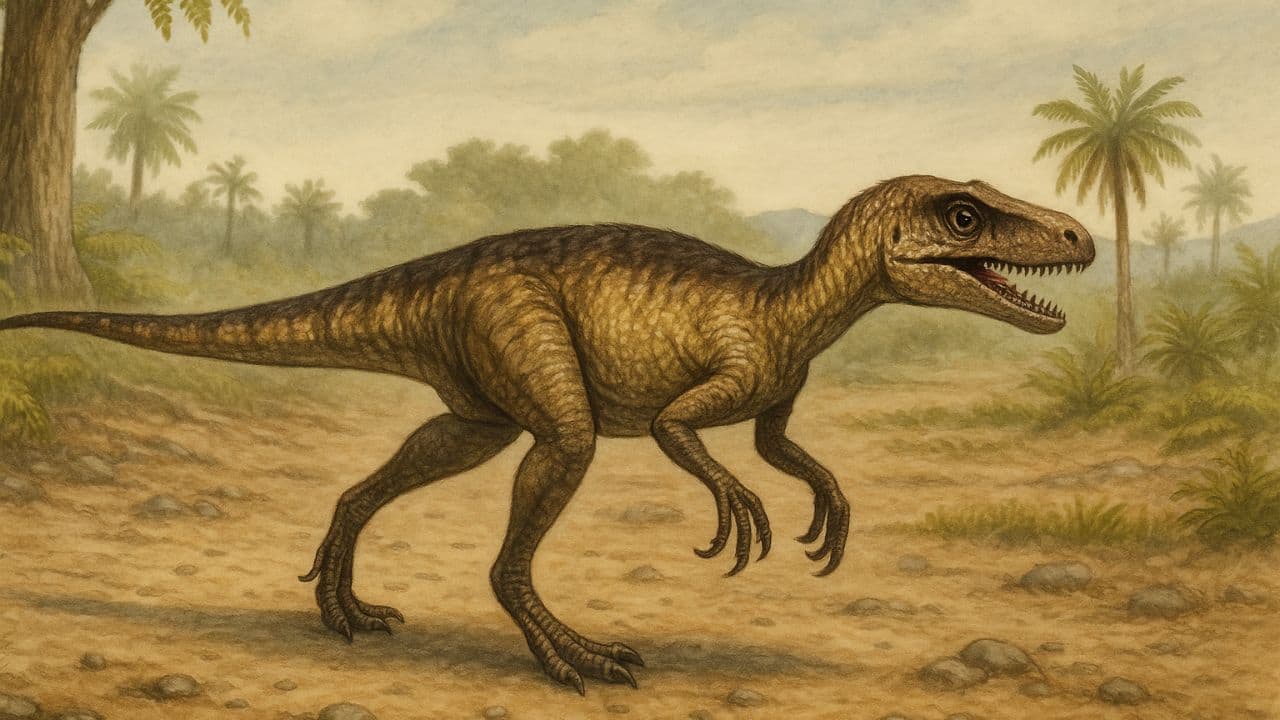Ancient Indian Fossil Reveal: Meet Maleriraptor kuttyi, a Small Carnivorous Dinosaur that Survived Mass Extinction

A remarkable discovery in the Pranhita-Godavari Valley of south-central India has shed new light on the ancient world of dinosaurs. A set of bones unearthed decades ago has been confirmed to be from a previously unknown species - Maleriraptor kuttyi, a small carnivorous dinosaur that roamed the region 220 million years ago.
Maleriraptor kuttyi is part of the Herrerasauria group, an early branch of predatory dinosaurs known for their bipedal nature. Researchers have confirmed that this ancient creature survived a mass extinction event that wiped out many herbivorous species, including the rhynchosaurs. This significant find makes Maleriraptor kuttyi the first confirmed herrerasaur to outlive the catastrophic event in Gondwana.
The discovery was published in the Royal Society Open Science journal and sheds new light on the early evolution of dinosaurs. Previously, only four herrerasaur species were known, all found in Argentina and Brazil. These South American species lived between 233 and 229 million years ago and were characterized by their bipedal nature and relatively short length, ranging from 4 to 20 feet.
The Maleriraptor kuttyi fossil was initially collected in the 1980s from the Pranhita-Godavari Valley site, which contains fossils from a time slightly younger than the first major dinosaur expansion during the Carnian age. Researchers believe that India's Norian-era climate was similar to southern North America's, leading to similarities in the distribution of ancient species like herrerasaurs and phytosaurs.
The study highlights how temperature and geography played a significant role in shaping early dinosaur evolution. With nearly forgotten fossils offering fresh clues, India's prehistoric past still holds more secrets to uncover.
